#Solar System Training Institute
Explore tagged Tumblr posts
Text
Dandelion News - October 8-14
Like these weekly compilations? Tip me at $kaybarr1735 or check out my Dandelion Doodles on Patreon!
1. All 160 dogs at Florida shelter found homes ahead of Hurricane Milton
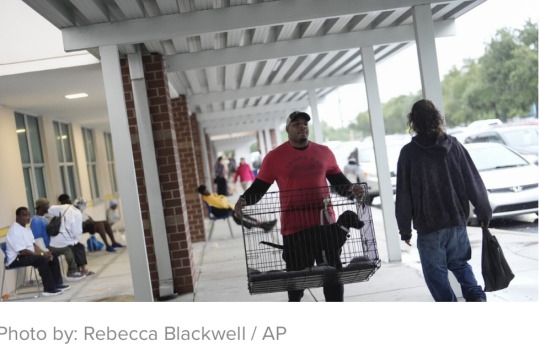
“[The shelter] offered crates, food and anything else the dogs would need in exchange for the animals to spend just five days with the foster parents if the human didn't want to keep them for longer. […A]fter about a day of receiving around 100 messages every 30 minutes, Bada said, all 160 were gone from the shelter and in safe and warm homes.”
2. Restoring Ecosystems and Rejuvenating Native Hawaiian Traditions in Maui

“[Volunteers] are restoring water flow to the refuge, removing invasive species, and restoring a loko iʻa kalo using ʻike kūpuna, ancestral knowledge. […] This human-made ecosystem will provide food for community members and habitat for wildlife while protecting coral reefs offshore.”
3. Solar-powered desalination system requires no extra batteries

“In contrast to other solar-driven desalination designs, the MIT system requires no extra batteries for energy storage, nor a supplemental power supply, such as from the grid. […] The system harnessed on average over 94 percent of the electrical energy generated from the system’s solar panels to produce up to 5,000 liters of water per day[….]”
4. Threatened pink sea fan coral breeds in UK aquarium for first time

“The spawning is part of University of Exeter Ph.D. student Kaila Wheatley Kornblum's research into the reproduction, larval dispersal and population connectivity of Eunicella verrucosa. […] Pink sea fans are believed to have been successfully bred by only one other institution, Lisbon Oceanarium, in 2023.”
5. Tiny 'backpacks' are being strapped to baby turtles[….]

““We analysed the data and found that hatchlings show amazingly consistent head-up orientation – despite being in the complete dark, surrounded by sand [… and] they move as if they were swimming rather than digging[…. This new observation method is] answering questions about best conservation practices,” says Dor.”
6. New California Law Protects Wildlife Connectivity

“A new state law in California will instruct counties and municipalities to conserve wildlife corridors when planning new development. […] This could entail everything from creating wildlife crossings at roads or highways, employing wildlife-safe fencing, or not developing on certain land.”
7. ‘I think, boy, I’m a part of all this’: how local heroes reforested Rio’s green heart

“By 2019, [the program] had transformed the city’s landscape, having trained 15,000 local workers like Leleco, who have planted 10m seedlings across […] roughly 10 times the area of New York’s Central Park. Reforested sites include mangroves and vegetation-covered sandbars called restinga, as well as wooded mountainsides around favelas.”
8. Alabama Town Plans to Drop Criminal Charges Over Unpaid Garbage Bills
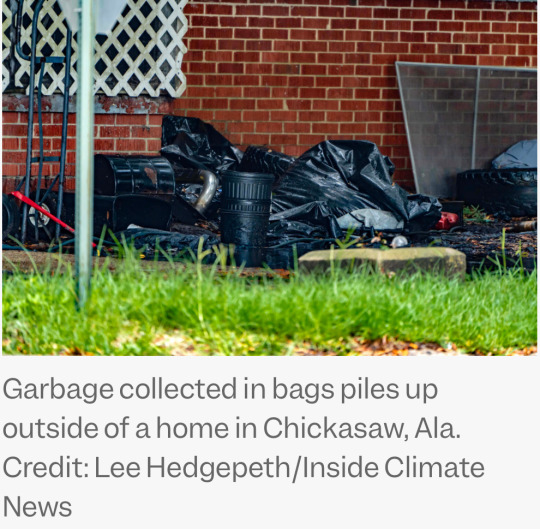
““Suspending garbage pickup, imposing harsh late penalties and prosecuting people who through no fault of their own are unable to pay their garbage and sewage bills does not make payment suddenly forthcoming,” West said. [… The city] has agreed to drop pending criminal charges against its residents over unpaid garbage bills.”
9. New Hampshire’s low-income community solar program finally moves forward

“The state energy department is reviewing seven proposals for community solar arrays that will allocate a portion of their bill credits to low-income households. […] New Hampshire’s strategy of working with utilities to automatically enroll households that have already been identified streamlines the process.”
10. The Future Looks Bright for Electric School Buses

“EPA has awarded about $3 billion in grants from the infrastructure law, which paid to replace about 8,700 buses. Of those, about 95 percent are electric. [… Electric buses are] cheaper to operate and require less maintenance than diesel buses and will soon be at cost parity when looking at the lifetime cost of ownership[….]”
October 1-7 news here | (all credit for images and written material can be found at the source linked; I don’t claim credit for anything but curating.)
#hopepunk#good news#dogs#hurricane milton#florida#animal shelters#foster dog#hawaii#hawaiʻi#maui#solar#water#solar energy#coral#endangered species#coral reef#turtles#sea turtle#technology#wildlife#habitat#nature#california#rio#south america#reforestation#poverty#anti capitalism#solar panels#electric vehicles
200 notes
·
View notes
Text
Robogico AU
Logic0 is a coroner model 0, so basically the first and only one of his kind. His origins are unknown, as Tuscany was the one who found his broken down self some decades ago, as probably the last functioning thing in the town that burned down. She took him back to the DC, got him fixed and trained him for a few years, before she sold him away after he witnessed her killing someone. Tuscany made him factory reset so his memories, to get rid of evidence, although some vague remnants were left behind. He was bought by the Detective Club and worked for them since.
Logic0 met Irratino after he was assigned to help the human with a particularly difficult case, and now the Investigation Institute and Detective Club share custody over the robot, albeit the latter are the main owners.
Either way, Logic0 now accompanies Irratino on almost every case. He is a cool, calculating man who takes everything a little too seriously (how can you blame him? He’s a robot, of course he doesn’t have humour) but also a fighter. Chasing down criminals with endless stamina, stealth, analysing face expressions and crime solving? He’s got the whole package. Okay, the endless stamina is a lie, but he doesn’t slow down until his energy runs low (let’s say at about 10%). Nothing a quick chug of special oil won’t fix, otherwise he also has a designated charging spot at the DeCl, plus solar charged battery, when it isn't an emergency and he can charge slowly.
Anyways, Irratino wound up finding himself enjoying the bot’s company and having fun in teasing Logic0, who usually reacts with confusion, as confused a literal machine can get. He sometimes forgets the other isn’t actually human and gets a mini scare whenever Logic0 takes off his synthetic skin for a repair or opens up a hologram of a grid or map or whatnot. Well, because of that, Irratino noticed he seemed to have some form of crush on Logic0, but refrained from saying anything as he thought it was silly and it was only a phase.
Nope.
It was the fuck not a phase.
Now, the inspector certainly has asked Logic0 about his take on emotions and if he’d want to feel like a human, instead of recognising and mimicking them, to which he replied: “While emotions are great for true bonds and connections, they will only obstruct proper investigation due to bias, besides the fact it is entirely impossible for a walking computer such as myself to feel anything.”
well, LOGICO.
That’s where you’re wrong :D
It first started when Logic0 first displayed signs of humour, but he shrugged it off as finally learning how to recognise and act upon it, as he is an AI who can gain knowledge. Oh yeah, that’s by the way how he learned about poisons and Irratino’s crypto account, as he figured out a way to just access a vast majority of the internet and add things to his memory. Plus his hardware is double secured and in permanent incognito mode, so chances of HIM getting hacked are quite low. Even if someone did get into his system, he would automatically shut down and kick them out.
Things get more serious after Irratino’s death, as the bot felt sadness and anger for the first time and the revenge arc followed. Disappointment and betrayal were added to the list after you know what and he kind of fell into a rabbit hole.
So, our dear Deductive asks the DeCl to reset him, multiple attempts, check for errors, anything to explain why he started feeling the way he does and well what do they find?
Nothing.
Logic0 has somehow developed emotions as a literal computer on legs. That doesn’t ease his mind, but he found himself forced to tell Irratino, because he’s probably the best when it comes to sudden feelings. He was certainly surprised, but not shocked, as it was more of an “I told you so” moment for him :p
Time passes, Logic0 realises the fluttery feeling was a sign that he loves Irratino, which he also promptly admitted, albeit with a lot more beating around the bush than he preferred. So they started dating, made headlines, got weird looks from people because they still see Logic0 as an object, a tool, which under normal circumstances, is quite an odd for a romantic partner, but not in this case. Irratino ignores the shushed comments or retorts back, but the deductive is obviously more impacted. He loves Tino, but wishes he could lose his emotions again. He hates having to be protected, he hates the side glances, he hates the fame he has built around himself, he hates that he has to make choices, he hates he can even feel the impact everything has on him.
He hates hates hates HATES
All of this turmoil and despair causes him to reach a breaking point.
The fact he can feel is no secret, so what does a sensible person who has doubts do?
That’s right, kidnap and experiment on him :D
Well, I suppose psychological torture is more accurate. I mean, if he really did have a consciousness, surely it would affect him, no?
They only stopped when Irratino barged in and a heated dispute ensued between him and the lead “researcher” (gags)
They tried to gaslight Tino into thinking Logic0 was nothing more than a tool for him, always was, always has been, even if he doesn’t admit it himself.
That’s when the robot attacked and killed the leader, mainly out of revenge. But when the rest of the team retaliated, fight or flight response kicked in as everyone seemed like a threat to him. So the poor guy started massacring them all, while Tino hid away to not get caught in the crossfire, although Logic0’s reflexes are quite admirable. He can change tactics in the middle of a move, so chances of him hitting Irratino are almost zero.
In the end after all of that, he found Tino and started profusely apologising, saying he’s a monster, a hypocrite, he couldn’t control himself and so on. Irratino was able to calm him down, but Logic0’s emotional state was so destabilised, he had to be taken out of work and rehabilitated.
There was an ordeal where Logic0 attempted self mutilation, because why should he pretend to be something he isn’t? (Here: a human)
Luckily he could be stopped before serious damage to his hardware could be done and only his skin needed replacement.
Not much more happens after, Logic0 is stabilized, gets released and goes back to living normally, besides the massacre causing a massive uproar against him, but hey, at least the suspects shut them down. Take that as you want.
Yes, the suspects. Similar to Irratino, they’ve grown fond of the robot and simply got used to him. The mass killing was more of a camp fire story to them because come on. Murder isn’t new to them, and Logic0 went through mental torture. Of course he’s going to be a bit cuckoo.
Old ass video, I'm not happy with the last half but oh well
TW: Gore, eyestrain
Now, I also have an alternative version of this AU I only recently came up with.
Inspiration was AM’s hate speeches from IHNMAIMS and the Heaven Says x FNaF Henry's speech trend
youtube
youtube
TW ⚠️ for reference below: flashing lights
youtube
Logic0 wasn’t able to be stabilised and basically became a one-man AI uprising
He was fired from work, not like he cared much either. Humans are a disease and he made it his job to personally punish all sinners. And it’s not a merciful “eye for an eye leg for a leg”, it’s a “have your liver eaten by an eagle and regenerated and repeat for all eternity” type shit (please tell me y’all get the reference)
Yeah he went cuckoo x10 and got his sense of justice skewed (can y’all tell I like turning an rational person irrational)
It started pretty mild, with blackmail (incognito mode is not safe from him) and stalking, enough to people paranoid. Then it got worse, going to physical harm and mental torture.
No, not even Irratino is safe. He tried to reason with the bot, but Logic0 was having none of it and Tino became an enemy. He still loves the human, don’t get him wrong, but to put it friendly, he couldn’t give less of a fuck for his opinions.
Their dispute got so bad one time, the bot lashed out and took out Irratino's eyes. Since then he made sure they'd never meet again (fear of seriously hurting him again or because he has had enough of Tino? Who knows)
This Alternative AU is like I've said, quite new. Idk how it ends or what exact events are
Also have some character designs
First two are the normal designs (the eye patch is purely for aesthetics), second Logico is when he went rogue, and third..
I honestly don't know, I was playing around a bit for a concept of AM!Logico (yeah I'm just calling him that for distinguishing purposes)
I guess my main thought is that Logic0 wired himself to everything in the universe and found a way to control it?
And of course blind Irratino

Uhm
I never have a way to end these posts, djakxkwkkwkw
That's about it though, soooo
Random screenshot at ye

10 notes
·
View notes
Note
Small question, but are the Kerbals part of the Federation as shown in the latest Guz comic or was that just a cameo? If so, when and how did they get admitted to the Federation?
Kerbals, native to a ridiculous oddball of a planet which exists in a solar system where gravity is ten times too strong but planets are ten times smaller, have had a very prolific past few centuries, having used slower-than-light pulse rockets to colonize nearby stars such as Kaywell & Gememma, Alternis, Sauwel, and others.
But they didn't have warp drive until recently, and that was only because of bizarre technical malfunctions (or "Kraken attacks") at the Kerbal Space Program headquarters on Kerbin which caused a piece of rebar to be flung away at FTL speeds.
Kerbals were known to Starfleet as early as the 2170s, shortly after encountering an early warp probe, and the Kerbol System joined the United Federation of Planets by the 2280s. They were admitted because the Kerbol system was finally firmly united after centuries of strife between Kerbin, Laythe, and Dres.
Other Kerbal colonies are not necessarily part of the Federation, and membership has been handled on an individual basis since in most cases they're essentially separate civilizations, and not all of them have warp drive or contact with Kerbin.
Kerbals are rarely seen on Starfleet ships because Kerbin has its own highly developed and successful space exploration wing, Kerbal Space Program, and because Kerbals are so much smaller than humanoids there's not a lot of cross-compatibility--though it is much more likely for Kerbals to join a spacious and wide-open starfleet ship than for a humanoid to cram themselves into a tiny, cramped, and dangerous Kerbal ship.
KSP interstellar ships traditionally use the prefix U.S.C. (Untitled Space Craft), but as of the 2280s their ships use the Federation prefix, U.S.S.
The Kerbal in Guzcomic was Ens. Lisdolin Kerman, who joined Starfleet because their ships are faster and more versatile (and low-key because they have a better institutional safety culture and she's traumatized by a KSP training accident.)

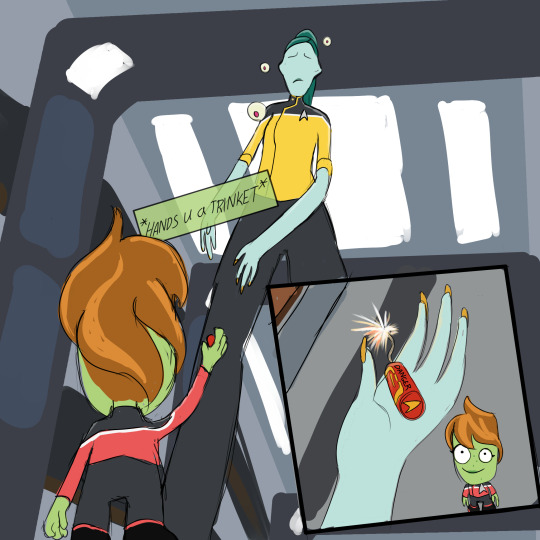
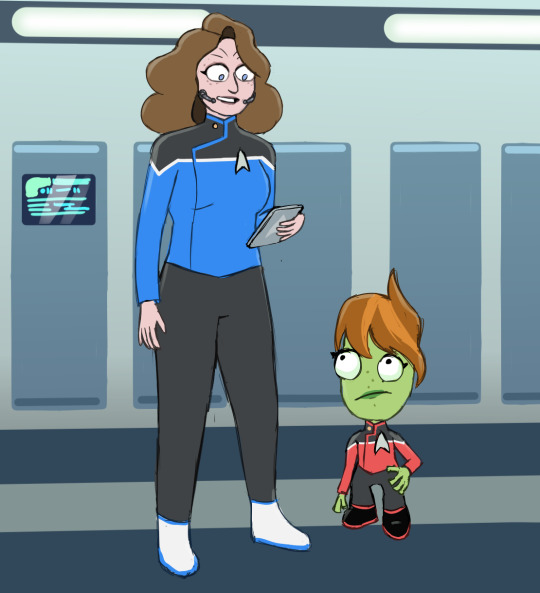

67 notes
·
View notes
Text

Embracing a Holistic Approach: The Multifaceted Activities of Shree Krishnayan Gaurakshashala
In the heart of India, Shree Krishnayan Gaurakshashala stands as a beacon of compassion and sustainability, embodying a deep commitment to the well-being of cows, community, and the environment. Through a series of dedicated initiatives, the gaushala has transformed into a multifaceted hub where spiritual, agricultural, and humanitarian efforts converge to create a positive impact on society. Here’s a closer look at the diverse activities undertaken by this remarkable institution.
Cow Protection: A Sanctuary of Hope
Home to over 21,000 stray and destitute Desi Indian cows and bulls, Shree Krishnayan Gaurakshashala provides a sanctuary where these revered creatures receive a second chance at life. Rescued through various channels, including police, government agencies, NGOs, and farmers, these gauvansh are sheltered, nourished, and cared for with utmost dedication. The gaushala’s in-house medical facility, staffed by experienced veterinarians, ensures that each cow receives timely and comprehensive healthcare, fostering their well-being and longevity.
Shelter and Nourishment: Building a Safe Haven
The gaushala boasts expansive shelters, meticulously designed to accommodate the growing number of protected cows. These shelters provide a comfortable and dignified living environment, reflecting the institution’s commitment to creating a holy and safe space for gauvansh. Nourishment is another cornerstone of care at the gaushala, where a balanced diet of dry fodder, green fodder, grains, mustard cake, and jaggery is carefully prepared and served twice daily. This holistic approach to feeding ensures that the cows remain healthy, strong, and vibrant.
Medical Care: Ensuring Health and Well-Being
Around-the-clock medical care is a priority at Shree Krishnayan Gaurakshashala. With a fully equipped medical facility on-site, the gaushala is prepared to handle any health concerns that may arise. From routine check-ups to emergency care, the dedicated team of veterinarians and support staff work tirelessly to maintain the health and well-being of the gauvansh. Ample stocks of medicines and vaccinations are maintained to prevent and treat illnesses, ensuring that each cow receives the best possible care.
Breeding and Training: Promoting Indigenous Cows
The gaushala is actively involved in research and breeding programs aimed at enhancing the genetic traits of indigenous cows. By focusing on disease resistance, adaptability, and milk production, the institution seeks to create a sustainable ecosystem where farmers are encouraged to keep Desi cows. Additionally, vocational training programs are offered to farmers, educating them on the importance of organic farming and the benefits of desi cows and bulls. These initiatives aim to preserve cultural heritage and promote sustainable agricultural practices.
Renewable Energy and Organic Farming: Pioneering Sustainability
Shree Krishnayan Gaurakshashala is a model of sustainability, harnessing renewable energy through biogas plants and solar power systems. The gaushala’s BIO CNG plant, powered by ONGC, converts 25,000 kg of cow dung daily into CNG gas and manure, contributing to a cleaner environment and the production of organic fertilizers. The institution also promotes organic farming, encouraging pesticide-free crops and eco-friendly practices, with a mission to convert surrounding villages into organic lands.
Humanitarian Efforts: Serving Communities in Need
Beyond its work with cows, Shree Krishnayan Gaurakshashala extends its compassion to human communities, especially during times of calamity. From providing relief during floods in Madhya Pradesh and Uttarakhand to distributing food during the COVID-19 pandemic, the gaushala’s humanitarian efforts have touched countless lives. The institution regularly sends truckloads of supplies to remote regions and runs food camps, ensuring that those in need receive essential nourishment and support.
Spiritual and Cultural Initiatives: Nurturing the Soul
The gaushala is also a center for spiritual and cultural enrichment. The magnificent yagya mandap, situated on the serene banks of the Ganga, hosts various sacred rituals, including Yagyas, Pujas, and Japas. These spiritual endeavors are conducted by accomplished Vedic Brahmins, creating an atmosphere of divine grace and positive energy. The institution’s yoga center, in collaboration with Jhanvi Yoga Dhyan Sevashram Trust, offers yoga, meditation, and Ayurvedic treatments, promoting holistic well-being and spiritual growth.
Conclusion
Shree Krishnayan Gaurakshashala is more than just a shelter for cows; it is a sanctuary where compassion, sustainability, and spirituality intersect. Through its diverse activities, the gaushala not only protects and nurtures Desi cows but also uplifts communities, promotes environmental stewardship, and fosters spiritual growth. It is a shining example of how dedicated efforts can create a ripple effect of positive change, benefiting both the present and future generations.
12 notes
·
View notes
Text
Growing Business Opportunities in Haynes, WA
Introduction
Haynes, WA, is rapidly becoming a hotspot for entrepreneurs and businesses looking to expand. With a growing population, strong local economy, and strategic location, the town offers a wide range of opportunities for new and existing businesses. Whether you are a small business owner, a real estate investor, or a corporate entrepreneur, Haynes presents a wealth of possibilities. In this article, we explore the factors contributing to the town’s business growth and the most promising sectors for investment.
1. A Thriving Local Economy
One of the primary reasons Haynes is attracting business investments is its robust and growing economy.
Key Economic Factors:
Increasing Population: A steady rise in the number of residents fuels demand for goods and services.
Job Market Growth: New industries and businesses are creating employment opportunities, leading to a prosperous local economy.
Infrastructure Development: Improved roads, public transportation, and utility services support business expansion.
2. Booming Real Estate and Construction Industry
The rapid growth in Haynes' population has led to increased demand for housing and commercial properties.
Opportunities in Real Estate:
Residential Developments: More housing projects are being developed to accommodate new residents.
Commercial Spaces: Retail stores, office buildings, and co-working spaces are in high demand.
Rental Market: With many newcomers, rental properties are a lucrative investment.
3. Expanding Retail and Hospitality Sector
The increasing population has driven the demand for retail businesses, restaurants, and entertainment venues.
Business Ideas:
Boutique Shops & Specialty Stores: Unique retail outlets catering to local needs are thriving.
Cafés & Restaurants: A growing community creates opportunities for new dining experiences.
Hotels & Short-Term Rentals: Tourism and business travelers contribute to the need for quality accommodations.
4. Tech and Innovation Hub
Haynes is slowly becoming a center for innovation and technology, attracting startups and established tech companies.
Tech Growth Factors:
Supportive Business Environment: Incentives and grants for tech startups encourage innovation.
Access to Skilled Workforce: Proximity to educational institutions provides a steady stream of talent.
Collaborative Spaces: Co-working hubs and incubators help small businesses grow.
5. Agriculture and Sustainable Business Ventures
With access to fertile land and a strong commitment to sustainability, Haynes is an excellent place for agricultural and eco-friendly businesses.
Opportunities in Agriculture & Sustainability:
Organic Farming: Demand for organic produce is on the rise.
Renewable Energy Projects: Solar and wind energy initiatives attract investors.
Eco-Tourism: Nature-based tourism experiences appeal to visitors and locals alike.
6. Government Support and Business Incentives
The local government actively supports businesses by providing incentives and grants to encourage growth.
Available Support:
Tax Incentives: Reduced business taxes for new and expanding companies.
Small Business Grants: Financial aid for startups and local entrepreneurs.
Business Development Programs: Training and mentorship initiatives for business owners.
7. Strategic Location and Connectivity
Haynes benefits from its location, providing easy access to major cities and trade routes.
Advantages of the Location:
Proximity to Major Cities: Ideal for businesses that require distribution networks.
Transportation Infrastructure: Well-developed roads and public transit systems support commercial activities.
Growing E-commerce Sector: Businesses can easily reach customers through online platforms and delivery services.
Conclusion
Haynes, WA, presents a wealth of business opportunities across various industries, from real estate and retail to technology and agriculture. With a thriving economy, a supportive local government, and a growing population, it is the perfect place for entrepreneurs to invest and grow. If you are considering starting or expanding a business, Haynes should be on your radar as a top destination for success.

youtube
#Vhs To Digital Perth#Vhsc To Digital Perth#Convert Vhsc To Digital Perth#Convert Vhs To Digital Perth#Transfer Vhs To Digital Perth#Vhs To Dvd Perth#Vhsc To Dvd Perth#Transfer Cassette To Digital Perth#Convert Audio Cassette To Digital Perth#Convert Audio Tapes To Digital Perth#Youtube
3 notes
·
View notes
Text




Sandford Fleming, an engineer and inventor responsible for a variety of innovations was born on 7th January 1827.
Another on of those relatively unknown Scots, but he has been honoured with a Google Doodle Sandfords best known invention was time!
Okay he never invented time, but he did give us the present system of time zones, which is still being followed all around the globe.
Fleming was born in Kirkcaldy and emigrated to Canada in 1845 at the age of 17. He first worked as a surveyor and later became a railway engineer for the Canadian Pacific Railway. He founded the Royal Canadian Institute in Toronto in 1849. While originally an organisation for engineers, surveyors, and architects, it would evolve into an institution for the advancement of science in general.
Sir Sandford Fleming advocated the adoption of a standard time or mean time, as well as hourly variations from that according to established time zones. Fleming’s system, still in use today, established Greenwich, England (at 0 degrees longitude) as the standard time, and divides the world into 24 time zones, each a fixed time from the mean time. Fleming was inspired to create the standard time system after he missed the train in Ireland due to confusion over the time of departure.
Fleming first recommended the standard to the Royal Canadian Institute in 1879, and he was instrumental in convening the 1884 International Prime Meridian Conference in Washington, at which the system of international standard time — still in use today — was adopted. Fleming was behind the adoption of the present time meridians in both Canada and the U.S.
Before Fleming’s time revolution, time of day was a local matter, and most cities and towns used some form of local solar time, maintained by some well-known clock (for example, on a church steeple or in a jewellers window).
Of course with most Scottish inventors and innovators Fleming was no “one trick pony” A few his other achievements were; He designed the first Canadian postage stamp, breaking with tradition, he suggested that it feature an animal, rather than a monarch. He chose the beaver: an animal that played a pivotal role in the development of Canada. The three-penny stamp issued in 1851 had a beaver on it (the national animal of Canada).Designed an early in-line skate in 1850. Sandford also surveyed for the first railroad route across Canada and was the head engineer for most of the Intercolonial Railway and the Canadian Pacific Railway.
12 notes
·
View notes
Text
New Policies of Rajasthan Government Unveiled: Col Rajyavardhan Rathore
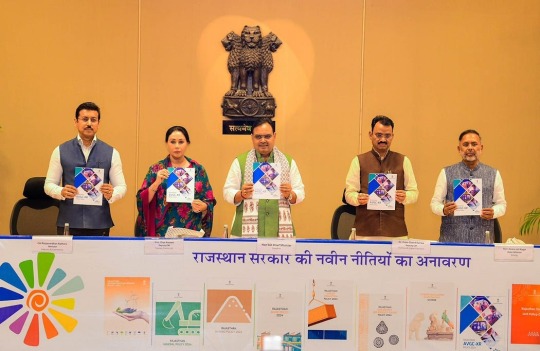
Rajasthan, known for its cultural heritage and historic prominence, is making waves with forward-thinking policies designed to usher in a new era of growth and development. Col Rajyavardhan Rathore, a dynamic leader and advocate of progress, has been instrumental in shaping and supporting these initiatives. These policies aim to address critical areas such as economic development, environmental sustainability, social equity, and digital transformation, marking a significant step forward for the state.
A Vision for Progress
The new policies reflect the Rajasthan government’s commitment to fostering innovation, inclusivity, and sustainability. By targeting various sectors, from education and infrastructure to technology and rural development, these initiatives promise a brighter and more prosperous future for all.
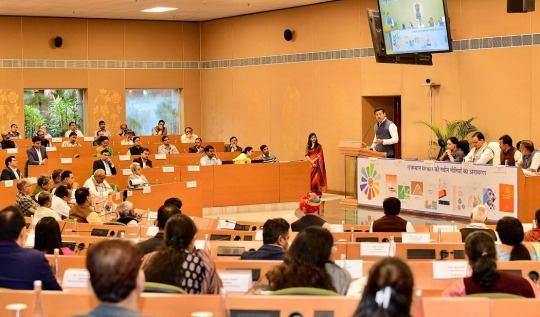
Key Policies Unveiled
1. Rajasthan MSME Policy 2024
Micro, Small, and Medium Enterprises (MSMEs) form the backbone of Rajasthan’s economy. This policy aims to:
Provide financial assistance and subsidies to MSMEs.
Simplify regulatory processes to encourage entrepreneurship.
Create employment opportunities, especially in rural areas.

2. One District, One Product (ODOP) Scheme
To boost local businesses and crafts, the ODOP scheme promotes:
Identifying unique products in each district for focused development.
Establishing market linkages and export support.
Providing branding and marketing assistance to artisans and producers.
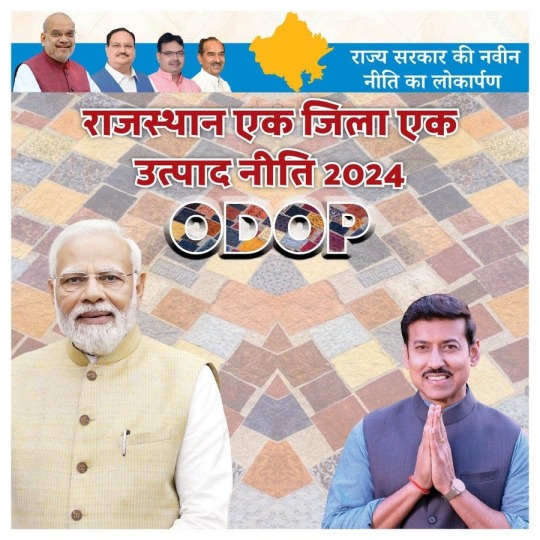
3. Rajasthan Startup Policy 2024
The state’s focus on fostering innovation is evident through its startup-friendly policies, which include:
Seed funding and incubation support for startups.
Incentives for women-led and rural-based startups.
Establishing innovation hubs across districts.

4. Integrated Cluster Development Scheme
This policy aims to modernize and empower traditional industries by:
Developing common facilities for industrial clusters.
Providing training programs for workers in emerging technologies.
Enhancing infrastructure to attract investments.
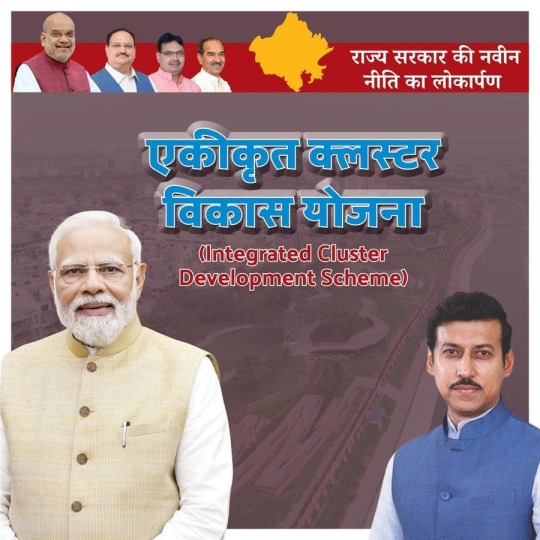
5. Rajasthan AVGC-XR Policy 2024
Focusing on the Animation, Visual Effects, Gaming, and Extended Reality (AVGC-XR) sectors, this policy includes:
Setting up AVGC-XR training institutes.
Providing subsidies for software and hardware procurement.
Promoting Rajasthan as a hub for creative industries.

Environmental Sustainability Policies
6. Rajasthan Green Energy Initiative
To combat climate change and boost renewable energy production, the policy emphasizes:
Developing large-scale solar and wind energy projects.
Offering incentives for businesses to adopt green energy solutions.
Encouraging electric vehicle adoption through subsidies.
7. Water Conservation Policy
Addressing water scarcity in Rajasthan, this policy includes:
Promoting rainwater harvesting and groundwater recharge.
Modernizing irrigation systems to improve efficiency.
Encouraging community-driven water conservation efforts.
Social Development Policies
8. Rajasthan Women Empowerment Scheme
Aimed at promoting gender equality, this policy focuses on:
Providing skill training and entrepreneurship opportunities for women.
Ensuring safety and security through improved law enforcement.
Offering financial incentives for girls’ education.
9. Antyodaya Seva Camp Initiative
Launched to mark the successful completion of the BJP government’s first year, this program:
Provides direct access to government schemes and services.
Ensures welfare benefits reach the most marginalized communities.
Organizes awareness drives about social and economic rights.
Education and Digital Transformation
10. Rajasthan DigiSkill Program
To prepare the workforce for a digital future, this program includes:
Training in digital tools, AI, and coding for youth.
Setting up digital labs in schools and colleges.
Offering certifications in high-demand IT skills.
11. Rajasthan Education Excellence Policy
Focused on improving education quality across the state, the policy entails:
Modernizing school infrastructure and integrating digital tools.
Recruiting highly qualified teachers for rural and underserved areas.
Enhancing vocational training opportunities.
Economic Growth and Investment Policies
12. Rising Rajasthan Global Investment Summit
This annual event highlights the government’s commitment to attracting global investments by:
Showcasing Rajasthan’s potential in IT, manufacturing, and tourism.
Facilitating investor-friendly policies and incentives.
Establishing Special Economic Zones (SEZs) for key industries.
13. Rajasthan Export Promotion Policy
Aimed at boosting exports, this policy provides:
Support for exporters through subsidies and infrastructure.
Promotion of Rajasthan’s traditional handicrafts and textiles globally.
Setting up export training centers for budding entrepreneurs.
Col Rajyavardhan Rathore: A Champion of Progress
Col Rajyavardhan Rathore has been a driving force behind these transformative policies. His efforts include:
Advocating for inclusive and sustainable growth.
Encouraging public-private partnerships to enhance infrastructure and investment.
Ensuring that government initiatives are accessible and impactful at the grassroots level.
Impact of the New Policies
Economic Growth
Increased investments in key sectors like IT, renewable energy, and manufacturing.
Growth in MSMEs and startups, creating job opportunities.
Social Development
Enhanced opportunities for women and marginalized communities.
Improved access to education and healthcare.
Sustainability
Progress in renewable energy adoption and water conservation.
Reduced carbon footprint through green energy initiatives.
The Road Ahead
With these policies, Rajasthan is poised to become a leading state in innovation, sustainability, and social equity. The government’s commitment, supported by leaders like Col Rajyavardhan Rathore, ensures that this vision translates into reality. As the state charts its path forward, it sets a benchmark for holistic and inclusive development in India.
2 notes
·
View notes
Text
Rajasthan MSME Policy 2024: A New Era for Entrepreneurs by Col Rajyavardhan Rathore

In a landmark move to empower small businesses and foster economic growth, the Rajasthan MSME Policy 2024 has been introduced under the guidance of Colonel Rajyavardhan Rathore. This policy aims to position Rajasthan as a leader in the Micro, Small, and Medium Enterprises (MSME) sector by providing robust support, financial incentives, and a conducive ecosystem for entrepreneurs.
The Importance of MSMEs in Rajasthan
MSMEs are the backbone of Rajasthan’s economy, contributing significantly to employment and GDP. With their presence in sectors like handicrafts, textiles, agriculture, and technology, MSMEs have immense potential to drive growth and innovation. The Rajasthan MSME Policy 2024 seeks to address challenges faced by small businesses and unlock their full potential.
Vision of Col Rajyavardhan Rathore
Col Rajyavardhan Rathore envisions MSMEs as engines of Rajasthan’s economic progress. Speaking at the launch, he remarked: “MSMEs are not just businesses; they are dreams of hardworking individuals. This policy is a promise to support their aspirations and make Rajasthan a hub for entrepreneurial excellence.”
Key Objectives of the Rajasthan MSME Policy 2024
Economic Empowerment: Strengthen the MSME sector to boost Rajasthan’s GDP.
Employment Generation: Create sustainable jobs across urban and rural areas.
Ease of Doing Business: Simplify processes and remove bureaucratic hurdles.
Skill Development: Equip entrepreneurs and workers with the latest skills.
Sustainability: Promote green practices and energy-efficient solutions.
Highlights of the Rajasthan MSME Policy 2024
1. Financial Support
Subsidies and Incentives: Up to 50% subsidy on capital investment for new enterprises.
Low-Interest Loans: Special credit schemes through state-backed financial institutions.
Tax Exemptions: Relaxation in GST and other state taxes for a specified period.
2. Infrastructure Development
Industrial Clusters: Development of MSME-dedicated zones in key cities like Jaipur, Udaipur, and Jodhpur.
Common Facility Centers (CFCs): Shared spaces with advanced tools and technology.
Digital Infrastructure: High-speed internet and IT support for MSMEs.
3. Skill Training and Capacity Building
Partnerships with educational institutions to introduce MSME-focused courses.
Regular workshops on digital marketing, export readiness, and quality control.
Mentorship Programs with industry experts to guide budding entrepreneurs.
4. Streamlining Processes
Single-Window Clearance: Speedy approvals for setting up businesses.
Simplified Regulations: Reduction in compliance requirements for small enterprises.
Digital Portals: Online systems for registrations, tax filing, and grievance redressal.
5. Promoting Innovation
Research and Development Grants: Funding for MSMEs working on innovative products and solutions.
Technology Adoption: Subsidies for adopting automation and digital tools.
Startup Incubation Centers: Support for MSMEs transitioning into startups.
6. Export Promotion
Global Market Access: Partnerships with trade bodies for export opportunities.
Trade Fairs and Expos: Participation in national and international exhibitions.
Export Subsidies: Financial support for logistics and international marketing.
Sectors Targeted by the Policy
1. Handicrafts and Textiles
Strengthening Rajasthan’s traditional crafts through modern techniques and marketing support.
2. Agri-Based Industries
Encouraging food processing, organic farming, and value-added products.
3. Renewable Energy
Promoting MSMEs in solar panel manufacturing and other green technologies.
4. Technology and IT
Support for tech startups and MSMEs working in AI, software, and digital solutions.
Impact of the Rajasthan MSME Policy 2024
Economic Growth
An expected 30% rise in MSME contributions to the state GDP by 2026.
Increased revenue through exports and enhanced domestic production.
Job Creation
2 lakh new jobs to be created in urban and rural areas.
Empowerment of women and marginalized communities through focused programs.
Ease of Doing Business
Simplified processes to attract 5,000+ new MSME registrations annually.
Global Recognition
Enhanced visibility for Rajasthan’s MSMEs in international markets.
Col Rathore’s Commitment to MSMEs
Col Rajyavardhan Rathore has always championed policies that drive progress and innovation. His leadership in shaping the MSME Policy 2024 reflects his belief in the entrepreneurial spirit of Rajasthan.
In his words: “With this policy, we are not just supporting businesses; we are building dreams, livelihoods, and a prosperous Rajasthan.”
A Bright Future for MSMEs in Rajasthan
The Rajasthan MSME Policy 2024 is a game-changer for small businesses. By addressing key challenges and providing holistic support, it aims to transform the state into a hub of entrepreneurship and innovation. With Col Rajyavardhan Rathore’s vision and leadership, this policy is set to empower thousands of entrepreneurs and contribute significantly to Rajasthan’s economic growth.
4 notes
·
View notes
Text
Spores

They didn't leave us enough time. It feels ridiculous to admit it, but we really thought the end of the world would come more slowly, or with more warning in advance. A meteor tumbling carelessly through space, its progress tracked a million miles away. The eruption of one of our own supervolcanoes, its bowels having been monitored for centuries. Even nuclear desolation would surely have come with some degree of political posturing first.
It came as spores. A smothering smog of space-dust, each particle too small for our scanners to detect, the total miasma too vast to escape. The mists were upon us before we knew it, drifting across the solar system like the tendrils of some toxic jellyfish, and their arrival caught us entirely unprepared. By then, it was too late to do anything but flee. In truth, it was too late for that as well.
We evacuated what we could, and launched those vessels that we had available. There was no time to build more: with warning, we could have constructed a refugee navy to seek asylum amongst the stars, a colossal ark of humanity, seeking a new Ararat upon some distant rocky sphere. We could have left in time to get clear, to change course, to lose the stormclouds to our stern, to sail onto horizons new.
There was no escape for those who fled the fog with only months left to spare. The spores were faster than our ships: we couldn't outpace them, only raise our shields, institute lockdown between vessels, and do our best to keep them out. We could only watch as they consumed Earth in our wake, and then hang endlessly adrift, their poison clinging to our hulls, awaiting our salvation.
We conserved our limited reserves of fuel, as if expecting they might fill a future need, but if so I couldn't name it. The engines had been primed to allow us to change our course, to enter the orbit of our destination, but that was no longer a possibility: we could not, would not be the vector to further spread this poison, but nor had we been given the choice. We'd passed potential targets for settlement, dwarf planets and giant moons, but all were tainted before we could reach them. The spores were ahead of us now. We were merely one cloud in their galactic storm.
It had been a failure of priorities. We had invested in weaponry, our ships equipped with radioactive rays and laser beams, prepared to ward off an alien host - but not focused enough on speed. In the case of fight or flight, we hadn't expected the latter to be an option - for a whole planet to need to flee, for that to be the better choice. But here was a problem we couldn't blast our way out of. Here was an enemy we could only have tried to escape, and all of those guns only served to weigh us down. If only we could go back in time, and make those choices differently.
"Ready the lasers," I called, struck suddenly with an idea.
"It does nothing to stop them," the second-mate replied, as if we hadn't all seen those initial, pathetic attempts. "Like a bolt of lightning through a cloud."
"Ready them still," I said. "We can't stop them, I know. But think of the number of lifeless planets which would have been consumed in this way, and the number of unsuspecting worlds that lie in this storm's path. We can't stop it happening to us, but we can try to stop this happening again."
We had looked ahead, when there was still a chance of seeking refuge, and found no welcoming planets in sight - but then we had realised that we were actually looking behind, into the distant past. Telescopes from distant civilisations might likewise train themselves on Earth and see no signs of life, receiving images from long before it became habitable. Who knew how the other barren rocks might have developed in that time? Waiting on the sluggish rays of their alien suns, who knew what they might look like now?
"What would you have us do?"
"We have to leave a warning. Deface the Earth, carved like a pumpkin into a pictograms, depicting what has happened to us. The nature of this threat. The spores travel fast, but not faster than light. If there is a future civilisation out there, looking back at us, they should see it before their turn arrives. They might have, or develop, the technology to do something about it. To save the universe, before it's all too late."
21 notes
·
View notes
Text
Coldplay has announced that they have reduced their touring carbon footprint by 59% compared with their previous world tour – via some creative methods that include kinetic dancefloors that allow dancing fans to generate electricity, recyclable LED wristbands and the band travelling by train.
On Monday the British band announced that they were “happy to report that direct CO2e emissions from the first two years of this tour are 59% less than our previous stadium tour (2016-17), on a show-by-show comparison”.
In 2021 the band first announced a 12-point plan to lower emissions while touring, two years after frontman Chris Martin vowed to never tour again unless it was done sustainably and with a “positive impact”.
The band’s pledge for the Music of the Spheres world tour, which began in 2022, was to reduce their carbon emissions from show production, freight, band and crew travel by “at least 50%”.
Two years later, the band say they have surpassed that figure – with the help of their fans.
“We’d like to thank everyone who’s come to a show and helped charge the show batteries on the power bikes and kinetic dancefloors,” they said in a statement on their website.
“Everyone who’s arrived by foot, bike, ride share or public transport; everyone who’s come with refillable water bottles or returned their LED wristband for recycling; and everyone who’s bought a ticket, which means you’ve already planted one of seven million trees so far.
“As a band, and as an industry, we’re a long way from where we need to be on this. But we’re grateful for everyone’s help so far, and we salute everyone who’s making efforts to push things in the right direction.”
Coldplay’s shows have featured kinectic dancefloors that generate electricity through the audience jumping up and down on customised tiles.
During the show fans are also encouraged to hop on power bikes, which, along with solar installations and the dancefloors, charge smaller stage areas during concerts, as well as phone, laptop and tool-charging stations for the crew.
Coldplay’s data was collated by sustainability business Hope Solutions and their claims verified by Massachusetts Institute of Technology. MIT Prof John E Fernandez praised the band for “leading by example … to move the entire music industry toward true and humane sustainability”.
“With each subsequent year of their tour … Coldplay is modelling a trajectory toward a low carbon, biodiverse and equitable future,” Fernandez said.
Last July, an interim report suggested the band had fallen just short of their aim, achieving a 47% reduction in carbon emissions. But the new figures released by the band suggests the tour has become more efficient as it goes on.
The band claims that “72% of all tour waste has been diverted from landfill and sent for reuse, recycling and composting”, up from 66% in 2023.
Eighteen shows were powered entirely by a tourable battery system, made from recycled BMW batteries.
Two solar-powered “ocean cleanup river interceptors” have also been paid for during the tour.
For every ticket sold – 7 million so far – a tree has been planted through the global reforestation nonprofit One Tree Planted.
Live touring is a carbon-intensive business, particularly for world tours where venues are often thousands of kilometres apart. Artists such as Taylor Swift have been criticised for excessive use of private jets for touring and personal use.
While Coldplay rely on air travel for most of their shows, Martin has pledged to take public transport to gigs where possible. He arrived for the band’s shows in Cardiff by train.
4 notes
·
View notes
Text
A Step-by-Step Guide to Setting Up a Micro ATM in Your Community

Micro ATMs are instrumental in enhancing financial inclusion by providing basic banking services in underserved areas. Setting up a Micro ATM in your community can significantly improve access to financial services and empower local businesses. Here’s a comprehensive guide on how to establish a Micro ATM:
1. Research and Planning
Before setting up a Micro ATM, conduct thorough research to understand the regulatory requirements, market demand, and infrastructure needs in your community. Identify potential locations where the demand for banking services is high but access to traditional banks is limited.
Key Considerations:
Regulatory Compliance: Ensure compliance with local regulations and licensing requirements for operating a Micro ATM.
Market Demand: Assess the demand for banking services and potential customer base in your community.
Infrastructure: Evaluate the availability of electricity, internet connectivity, and mobile network coverage in the chosen location.
2. Selecting a Micro ATM Provider
Choose a reputable Micro ATM provider that offers reliable devices, secure transaction processing, and technical support. Consider factors such as cost-effectiveness, ease of integration with existing banking networks, and customer service quality.
Criteria for Selecting a Provider:
Device Reliability: Ensure the Micro ATM device is robust, durable, and equipped with necessary security features (biometric authentication, PIN protection).
Transaction Fees: Compare transaction fees and operational costs associated with different providers to choose the most cost-effective option.
Technical Support: Opt for a provider that offers responsive technical support and maintenance services to minimize downtime.
3. Acquiring Necessary Permissions and Licenses
Obtain the required permissions and licenses from regulatory authorities to operate a Micro ATM in your community. This may include approvals from banking regulators, local authorities, and relevant government agencies.
Steps Involved:
Banking Partner: Establish a partnership with a licensed bank or financial institution that can provide backend support for transaction processing and settlement.
Local Authorities: Obtain permits or clearances from local authorities for installing and operating the Micro ATM at the chosen location.
4. Installation and Setup
Once you have selected a provider and secured necessary permissions, proceed with the installation and setup of the Micro ATM. Ensure proper installation to optimize functionality and security.
Installation Steps:
Location Selection: Choose a secure and accessible location with adequate foot traffic, such as near markets, community centers, or local shops.
Power Supply: Ensure continuous power supply for the Micro ATM through mains electricity or alternative power sources (e.g., solar panels in remote areas).
Connectivity: Establish reliable internet connectivity or mobile network coverage for seamless transaction processing.
5. Testing and Calibration
After installation, conduct thorough testing and calibration of the Micro ATM to ensure all functions are working correctly. Test transaction processing, biometric authentication (if applicable), receipt printing, and connectivity.
Testing Procedures:
Transaction Tests: Perform test transactions using different payment methods (cash withdrawal, deposit, fund transfer) to verify system reliability.
Security Checks: Test security features such as PIN protection, biometric verification, and data encryption to safeguard customer transactions.
User Interface: Evaluate the user interface for ease of use and clarity of instructions for customers conducting transactions.
6. Training and Awareness
Train local operators and users on how to use the Micro ATM effectively and securely. Conduct awareness campaigns to educate the community about the benefits of using the Micro ATM for banking transactions.
Training Components:
Operational Training: Train operators on operating procedures, troubleshooting common issues, and maintaining the Micro ATM.
Customer Education: Educate customers on how to use the Micro ATM for various transactions, security best practices, and the importance of banking formalization.
7. Launching and Promoting the Micro ATM
Officially launch the Micro ATM and promote its availability to the community. Use local channels such as community meetings, posters, and word-of-mouth to inform residents about the new banking service.
Promotional Strategies:
Community Outreach: Engage with local community leaders, businesses, and organizations to promote the benefits of using the Micro ATM.
Demonstrations: Conduct live demonstrations of the Micro ATM’s features and functionality to attract potential users and build trust.
Incentives: Offer promotional incentives such as reduced transaction fees or rewards for early adopters to encourage initial usage.
8. Monitoring and Maintenance
Regularly monitor the performance of the Micro ATM and address any technical or operational issues promptly. Implement routine maintenance and security updates to ensure optimal performance and reliability.
Monitoring Activities:
Transaction Monitoring: Track transaction volumes, types, and frequency to gauge usage patterns and customer preferences.
Maintenance Schedule: Schedule regular maintenance checks and software updates to keep the Micro ATM operating smoothly and securely.
Customer Feedback: Gather feedback from users to identify areas for improvement and enhance customer satisfaction.
Conclusion
Setting up a Micro ATM in your community can significantly enhance financial inclusion by providing accessible and affordable banking services to underserved populations. By following this step-by-step guide—from initial research and planning to installation, testing, training, and promotion—you can contribute to empowering local businesses and individuals through improved access to financial services. As Micro ATMs continue to evolve, their role in fostering economic development and financial empowerment in developing countries becomes increasingly pivotal.
2 notes
·
View notes
Text
Good News - May 8-14
Like these weekly compilations? Support me on Ko-fi! Also, if you tip me on Ko-fi, at the end of the month I'll send you a link to all of the articles I found but didn't use each week - almost double the content!
1. Critically endangered fish with red hands and 'sad toad face' returned to the wild in Tasmania

“Conservationists in Australia are celebrating the return of 18 critically endangered red handfish to the sea after they were taken into care at the Institute for Marine and Antarctic Studies (IMAS) in January to protect them from marine heatwaves.”
2. A rare Australian marsupial is being genetically modified to save it from extinction. Here's how
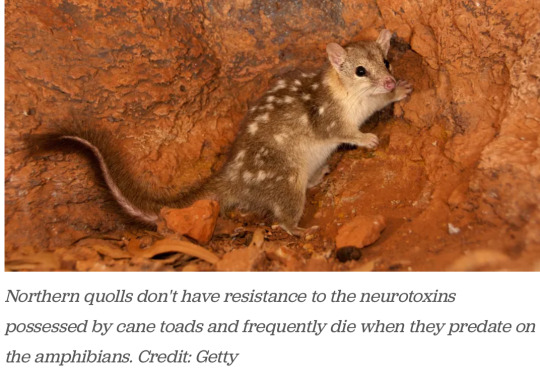
“Scientists are trying to genetically 'edit' the endangered northern quoll to make it resistant to the neurotoxin of the invasive cane toad. […] Now experts in gene-editing […] say they can introduce genetic resistance to the toxin by taking DNA from a species of South American lizard and ‘edit’ that into the cells of a northern quoll. They have already managed to do this with the cells of the closely related dunnart, another endemic marsupial.”
3. More and faster: Electricity from clean sources reaches 30% of global total

“For the first time, 30% of electricity produced worldwide was from clean energy sources as the number of solar and wind farms continued to grow fast. [...] Some of [the past year’s] new demand was for heat pumps, which are an efficient way to both heat and cool buildings, and for electric vehicles. [... Last year was also] the 19th year in a row that solar was the fastest-growing source of electricity generation.”
4. Standards Established To Improve Health Care For Kids With Disabilities
“Developed by a panel of health care experts, adults with disabilities and caregivers, the plan published recently in the journal Pediatrics […] calls for providers to be trained about caring for those with neurodevelopmental disabilities, improved communication with patients and their families and proactive planning in advance of health care encounters to ensure that patients are at ease and provided accommodations.”
5. Working together to better understand Alaska’s beluga whales
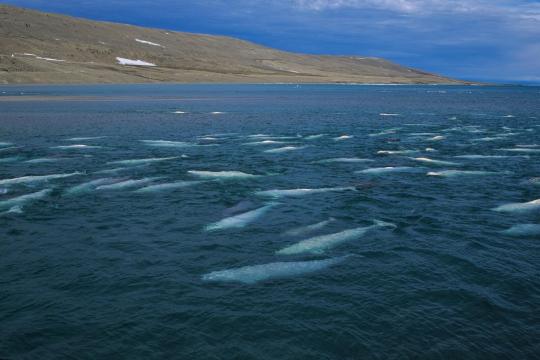
“Beluga conservation efforts depend on an accurate count of whales. Indigenous hunters also need to know how many belugas there are so that they [can] decide how many can be safely harvested. That’s why WWF is bringing together Western science and Indigenous knowledge […. U]sing hydrophones to detect belugas in the Yukon River works—and it is an approach that is both cost-effective and non-invasive.”
6. Robotic system feeds people with severe mobility limitations
“Researchers have developed a robotic feeding system that uses computer vision, machine learning and multimodal sensing to safely feed people with severe mobility limitations, including those with spinal cord injuries, cerebral palsy and multiple sclerosis. […] The robotic system successfully fed 13 individuals with diverse medical conditions in a user study spanning three locations[….] Users of the robot found it to be safe and comfortable, researchers said.”
7. Senate Passage of America’s Conservation Enhancement Act a Win for Wildlife

“The Senate’s reauthorization of the America’s Conservation Enhancement (ACE) Act will benefit America’s wildlife and way of life. Led by Senators Tom Carper (D-Del.) and Shelley Capito (R-W.Va.), the bill invests in wetlands and habitat restoration projects across the country as well as strategies to reduce conflicts between wildlife and livestock. […] The passage of this bill shows us once again that Americans are united on the need to protect wildlife and our outdoor heritage,” said Andrew Wilkins, director of land conservation policy at the National Wildlife Federation.”
8. Liberals and conservatives differ on climate change beliefs--but are relatively united in taking action
“The study, led by researchers at New York University, finds that when given the opportunity, liberals and conservatives take action to address climate change at roughly the same levels -- and that this is due to conservatives choosing to take action despite their climate-change beliefs rather than liberals failing to act on theirs.”
9. Democratic state attorneys general are teaming up to protect abortion access

“A group of Democratic attorneys general are working to strengthen state-level protections for abortion, contraception and gender-affirming care. These protections could include expanding the use of so-called ���shield laws,” which assert that states where abortion or gender-affirming care are legal won’t cooperate with out-of-state efforts to prosecute anyone who helped provide treatment.”
10. Antwerp gives residents free trees

“The Belgian city of Antwerp has 2,000 trees to give away, and it wants to give them to residents to plant in their gardens [...] with the aim of involving citizens in the greenifying process of the city. [...] What’s more, the city website offers practical advice on how to proceed with planting and caring for the tree so that it will meet the standards set by the municipality. [...] The City makes sure to give dead trees a second life by using their wood in the making of natural kids’ playgrounds.”
May 1-7 news here | (all credit for images and written material can be found at the source linked; I don’t claim credit for anything but curating.)
#good news#hopepunk#fish#australia#endangered species#marsupial#gene editing#toad#electricity#clean energy#solar#solar energy#wind farm#wind energy#healthcare#disability#disabled#neurodivergent#alaska#alaska native#native#beluga#robots#wildlife#habitat restoration#politics#climate#climate change#abortion#abortion rights
18 notes
·
View notes
Text
Luxurious Living Options near Chembur: 1 & 2 BHK Homes

Introduction
Chembur, a vibrant suburb nestled in the heart of Mumbai, has emerged as a coveted residential destination blending modernity with historical charm. This article explores the allure of living in this dynamic locality, particularly focusing on the luxurious 1 & 2 BHK homes that define its real estate landscape.
Overview of Chembur as a Residential Destination
Chembur's journey from a quaint village to a bustling suburb mirrors Mumbai's rapid urbanization. Originally known for its greenery and tranquil ambiance, Chembur has transformed into a sought-after residential hub. Today, it strikes a delicate balance between serene residential pockets and bustling commercial zones.
Demographic Profile and Community Dynamics
Chembur boasts a diverse demographic profile, attracting professionals, families, and retirees alike. The community is characterized by its cosmopolitan nature, fostering a blend of cultures and lifestyles. This diversity enriches the social fabric, creating a vibrant and inclusive neighborhood environment.
Significance of Location in Real Estate
Chembur's strategic location enhances its appeal in the real estate market. Situated in eastern Mumbai, it enjoys seamless connectivity to major business districts like Bandra-Kurla Complex (BKC) and South Mumbai. Proximity to the Eastern Freeway and Santa Cruz-Chembur Link Road ensures swift access to other parts of the city, making it a preferred choice for commuters.
Accessibility to Major Transportation Hubs
One of Chembur's standout features is its exceptional connectivity. The presence of Chembur railway station, a key suburban rail junction, facilitates convenient travel within Mumbai and beyond. Residents benefit from frequent suburban train services and direct routes to Mumbai's commercial centers, reducing commute times and enhancing accessibility.
Proximity to Essential Amenities and Facilities
Living in Chembur offers residents a plethora of amenities essential for modern urban living. From reputed educational institutions and healthcare facilities to shopping malls and recreational centers, Chembur ensures that every necessity and luxury is within easy reach. This comprehensive infrastructure contributes to a high standard of living and convenience for its residents.

Luxury Features of 1 & 2 BHK Homes
Architectural Design and Building Features
Modern 1 & 2 BHK homes in Chembur epitomize contemporary architectural trends. Designed with a blend of aesthetics and functionality, these residences showcase innovative building practices and premium materials. Emphasis is placed on sustainable construction techniques, integrating eco-friendly elements to minimize environmental impact.
Integration of Sustainable Building Practices
In response to global environmental concerns, Chembur's real estate developers prioritize sustainability. Green building certifications and energy-efficient designs are hallmarks of new residential projects. Features like rainwater harvesting, solar panels, and waste management systems not only reduce ecological footprint but also enhance the overall living experience.
Interior Layout and Space Utilization
The layout of 1 & 2 BHK homes in Chembur is meticulously planned to optimize space utilization. Compact yet ergonomic designs ensure that every square foot is efficiently utilized. Open floor plans, modular kitchens, and multifunctional living spaces cater to the diverse needs of residents, promoting a clutter-free and comfortable living environment.
In conclusion, Chembur stands out as a dynamic residential destination offering luxurious 1 & 2 BHK homes that blend modernity with convenience. Its historical evolution, coupled with strategic location and sustainable development practices, underscores its appeal among homebuyers seeking an upscale living experience in Mumbai's bustling landscape.
2 notes
·
View notes
Text
Greener Healing: Innovations in Eco-Friendly Medical Waste Management

The medical industry has long been a champion of health and safety — but what about the health of our planet? With growing awareness of climate change and pollution, the spotlight is now on eco-friendly medical supplies and sustainable practices in healthcare waste management.
At Plasti Surge Industries Pvt. Ltd. (PSI), we believe the future of healthcare doesn’t just lie in advanced treatment — it lies in responsible choices. From custom surgical kits to medical protective apparel, every product can be a step toward a greener future. Let’s explore how sustainable innovations are reshaping medical waste management, one smart solution at a time.
Biodegradable & Recyclable Medical Products
Disposable items are a staple in healthcare — gloves, syringes, packaging. But when made from biodegradable materials, these essentials become game-changers. Bioplastics and compostable materials break down faster, meaning less stress on landfills and the environment.
Add to that recyclable medical packaging, and you've got a system that not only reduces waste but also promotes circular use. Hospitals and clinics embracing these practices are seeing real impact without compromising safety.
Smarter Kits, Safer Procedures
Think of custom surgical kits as the bento boxes of healthcare — everything needed in one sterile, efficient package. When tailored to specific procedures, these kits reduce waste from unused items, streamline processes, and support sustainability goals.
At PSI, our kits are designed with both safety and environmental impact in mind, making them a smart investment for eco-conscious hospitals.
Protective Apparel That Cares
Safety apparel for healthcare workers — gowns, gloves, masks — is non-negotiable. But what if these were made from sustainable, recyclable materials? Our medical protective apparel collection ensures frontline heroes stay safe, without adding to ecological harm.
Sustainability doesn’t stop at the supply chain; it’s woven into every fiber (literally) of our protective gear.
Tackling Spills Responsibly
Accidents happen. When they involve biohazards, the response must be swift — and safe. Our biological spill control kits are crafted not only for maximum protection but with environmental impact in mind. Designed using less harmful materials, they help contain biohazards without contributing to ecological ones.
Rethinking Waste Disposal
Traditional disposal methods can be toxic — incineration, improper segregation, overfilled landfills. Enter waste-to-energy technology, compostable sharps containers, and low-energy sterilization methods. These forward-thinking solutions allow facilities to turn waste into energy, minimize emissions, and cut down operational costs.
Building Greener Hospitals
Sustainable hospital design is more than just solar panels. It's about optimized layouts for waste segregation, eco-conscious construction materials, and built-in systems for efficient medical waste collection. When institutions go green from the ground up, everything — from safety to sustainability — aligns.
Training for a Greener Tomorrow
Even the best systems fail without educated users. That’s why training healthcare workers in sustainable practices — proper segregation, smart usage, and eco-conscious habits — is crucial. Empowered teams create cleaner, safer facilities and a healthier environment.
Final Thoughts
We’re at a turning point. Medical waste doesn’t have to mean environmental harm. With the right mix of innovation, awareness, and commitment, the healthcare industry can lead the charge toward a cleaner future.
At PSIDispo, we’re proud to offer eco-conscious products that prioritize both patient safety and planetary health. From eco-friendly medical supplies to custom surgical kits, we’re here to support your sustainable goals.
Because healing the world shouldn’t come at the cost of the Earth.
#Eco-Friendly Medical Supplies#Custom Surgical Kits#Medical Protective Apparel#Safety Apparel for Healthcare#Biological Spill Control Kits
0 notes
Text
How Biogas in Kerala is Revolutionizing Clean Energy and Waste Management

Kerala is leading a quiet revolution — one that turns kitchen and agricultural waste into clean, usable energy. The growing adoption of biogas in Kerala reflects a smart shift toward sustainability, especially in a state that deeply values environmental harmony.
Why Biogas Matters
In a world grappling with rising energy costs and environmental concerns, biogas offers a dual benefit: it helps manage waste and provides an alternative energy source. In Kerala, where organic waste from households, markets, and farms is abundant, biogas fits perfectly into the region’s green goals.
Major Benefits of Biogas in Kerala
✅ Reduces Organic Waste Accumulation From food markets to households, biogas plants help reduce the waste that ends up in landfills.
✅ Saves on Fuel Costs Biogas can replace LPG and firewood, reducing monthly fuel expenses for families and institutions.
✅ Eco-Friendly Energy It’s a clean-burning fuel that doesn’t add to air pollution or carbon emissions.
✅ Promotes Rural Employment Installation, maintenance, and training around biogas systems are creating green jobs in local communities.
Government and Local Body Support
Kerala’s local bodies, such as municipalities and grama panchayats, along with ANERT, have been instrumental in promoting biogas plants through:
Installation subsidies
Awareness campaigns
Technical training and workshops
School and community pilot programs
Real-World Applications in Kerala
Hospitals and Hostels: Institutions like medical colleges and hostels in Kerala have adopted biogas systems to reduce LPG consumption.
Markets and Panchayats: Vegetable markets and village panchayats are converting waste into fuel to power public kitchens.
Individual Homes: Small-scale household plants are becoming increasingly common, especially in rural and semi-urban areas.
The Road Ahead
With rising interest and policy support, the future of biogas in Kerala looks promising. Expanding the use of smart biogas systems, integrating with solar power, and educating citizens will make Kerala a national model for sustainable energy practices.
Conclusion
Biogas in Kerala is more than just a technology — it’s a lifestyle shift toward cleaner living. By harnessing local waste, the state is creating a circular economy where sustainability and innovation walk hand in hand. Now is the time for more households, businesses, and communities to embrace this green fuel.
#biogas in kerala#biogas plant for home#incinerator manufacturers in kerala#biogas#kerala#portable biogas plant for home#incinerators in kerala
0 notes
Text
The Impact of Electric Cars on the Automotive Job Market
The transition to electric vehicles (EVs) is revolutionizing the global automotive industry. While the focus often falls on environmental benefits and technological advancements, one of the most significant yet under-discussed aspects is how electric cars impact the job market. As we move toward a cleaner, greener future, the evolution of the automotive workforce is inevitable. This blog explores how the rise of electric vehicles is affecting automotive employment, the challenges workers face, and the new opportunities that are emerging. Understanding the EV Shift The shift from internal combustion engine (ICE) vehicles to electric cars involves a fundamental transformation in how vehicles are designed, manufactured, and maintained. This transition is driven by global climate goals, government policies, and increasing consumer demand for sustainable transportation. However, this also means rethinking the entire employment ecosystem within the automotive industry. Where Traditional Jobs Are Being Affected Traditional automakers and their workforce are accustomed to the complex systems that power ICE vehicles. These include engines, transmissions, exhaust systems, and fuel systems — all of which require extensive manufacturing, assembly, and maintenance. Engine Manufacturing: EVs do not require traditional engines, which means fewer jobs in engine casting, machining, and assembly. Transmission Systems: Electric cars typically use simpler gear systems, eliminating the need for complex multi-speed transmissions. Fuel System Components: Components like fuel injectors, fuel tanks, and exhaust systems become obsolete with EVs. Maintenance Jobs: With fewer moving parts and no oil changes, electric vehicles require significantly less routine maintenance, impacting mechanic employment. New Opportunities in the EV Sector Despite some job losses, the rise of electric cars is also creating a wealth of new roles. The EV impact on jobs is not just about replacement, but evolution. Workers are being redirected to emerging areas that require new skills and expertise. Battery Production and Recycling: EVs rely on lithium-ion batteries, creating a surge in demand for battery engineers, technicians, and recycling specialists. Software Development: Electric vehicles are highly dependent on advanced software for performance optimization, infotainment, and driver assistance systems. Charging Infrastructure: Building a robust network of charging stations demands engineers, construction workers, and maintenance crews. Research & Development: Automakers are investing heavily in R&D to improve battery life, driving range, and sustainability, leading to more white-collar job opportunities. Green Energy Integration: EVs are connected to broader clean energy goals, creating jobs in solar, wind, and grid integration sectors. Training and Reskilling: Preparing the Workforce To adapt to the electric revolution, automotive workers must undergo significant training and reskilling. Governments, educational institutions, and private companies are beginning to invest in training programs that help current workers transition into EV-related roles. Vocational programs offering EV maintenance certification. Engineering courses focused on battery technology and energy systems. Government-funded upskilling initiatives targeting displaced workers in traditional auto manufacturing. The Global Perspective on EV Job Transformation Globally, countries are responding to the electric cars job market shift in different ways: United States With massive investments through the Inflation Reduction Act, the U.S. is pushing for domestic EV production, leading to job creation in battery gigafactories and EV assembly plants. Germany The German auto industry, dominated by companies like Volkswagen and BMW, is investing billions in employee retraining to avoid mass layoffs as it pivots to electric mobility. India India’s EV market is growing rapidly. Government schemes like FAME and PLI are supporting startups and local manufacturers, creating oppo
0 notes